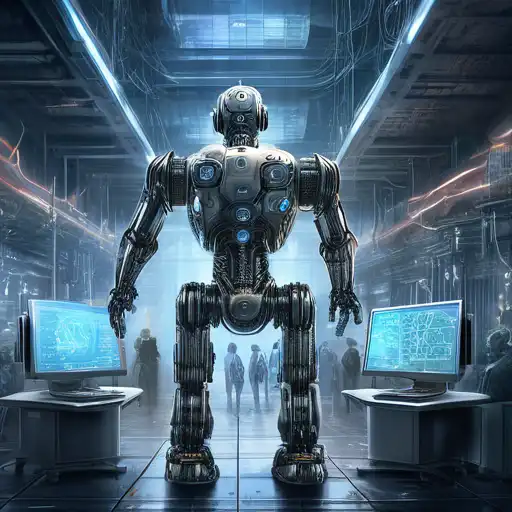Introduction to AI and Machine Learning
In the rapidly evolving world of technology, Artificial Intelligence (AI) and Machine Learning (ML) stand out as two of the most groundbreaking advancements. While often used interchangeably, AI and ML have distinct differences and applications. This article delves into a comparative study of AI and ML, shedding light on their unique characteristics, how they complement each other, and their impact on various industries.
Understanding Artificial Intelligence
Artificial Intelligence is a broad field of computer science focused on creating systems capable of performing tasks that typically require human intelligence. These tasks include problem-solving, recognizing speech, learning, planning, and more. AI can be categorized into two types: Narrow AI, which is designed to perform a narrow task (e.g., facial recognition), and General AI, which can perform any intellectual task that a human can.
Understanding Machine Learning
Machine Learning, a subset of AI, involves the development of algorithms that allow computers to learn from and make decisions based on data. Unlike traditional programming, where humans write explicit instructions, ML models improve their performance as they are exposed to more data over time. ML is further divided into supervised learning, unsupervised learning, and reinforcement learning.
Key Differences Between AI and Machine Learning
While AI aims to simulate human intelligence to solve complex problems, ML focuses on enabling machines to learn from data so they can give accurate outputs. Here are some key differences:
- Scope: AI has a broader scope than ML, encompassing everything from robotics to expert systems. ML is specifically about learning from data.
- Dependency: AI can function without ML by using predefined rules, but ML requires data to learn and make decisions.
- Applications: AI is used in a wide range of applications, from virtual assistants to autonomous vehicles. ML is primarily used in data analysis, predictive modeling, and natural language processing.
How AI and Machine Learning Work Together
Despite their differences, AI and ML often work hand in hand. ML algorithms are a key component of many AI systems, enabling them to learn from data and improve over time. For example, AI-powered chatbots use ML to understand and respond to user queries more effectively as they interact with more users.
The Impact of AI and Machine Learning on Industries
AI and ML are transforming industries by automating processes, enhancing decision-making, and creating new opportunities. Here are a few examples:
- Healthcare: AI and ML are used for disease prediction, personalized treatment plans, and drug discovery.
- Finance: These technologies help in fraud detection, risk management, and algorithmic trading.
- Retail: AI and ML enhance customer experiences through personalized recommendations and inventory management.
Future Trends in AI and Machine Learning
The future of AI and ML is incredibly promising, with advancements in deep learning, neural networks, and quantum computing paving the way for more sophisticated applications. As these technologies continue to evolve, they will further blur the lines between human and machine capabilities, opening up new possibilities across all sectors.
In conclusion, while AI and Machine Learning are closely related, they serve different purposes and have distinct applications. Understanding these differences is crucial for leveraging their potential to drive innovation and efficiency in various fields. As we look to the future, the integration of AI and ML will undoubtedly continue to shape the technological landscape, offering exciting opportunities for growth and development.
